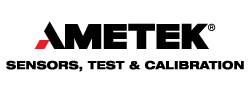Choosing the Right Pressure Gauge
Posted by Trish Gabler, Pressure Product Manager at AMETEK STC on Oct 29th 2021
When selecting a pressure gauge, it is important to consider the following factors
Pressure Range: A gauge range of twice the working pressure is generally recommended for maximum accuracy, safety, and for extended gauge life. The operating pressure should always be limited to 75% of the gauge range. When pressure pulsations are encountered, the operating pressure should be limited to two thirds of the gauge range.
Temperature Range: Maximum temperature limits for AMETEK general equipment gauges that are soft-soldered are -40ºF to 120ºF. Maximum temperature limits for AMETEK process gauges that are silver soldered or welded are -40ºF to 190ºF and for AMETEK liquid filled gauges are 0ºF to 140ºF.
Conditions Affecting Wear of the System: In applications involving severe pressure fluctuations, vibrations and/or pulsation, the use of restrictors or pressure snubbers is recommended. Also, liquid filled gauges should be considered. The fill fluid will lubricate the movement and reduce friction and wear. Liquid filling can also prevent moisture or corrosive atmospheres from affecting the gauge internals. The most common fill fluid is glycerin, although we offer several others from the factory. Silicone can be used in applications with larger temperature extremes. In applications where liquid filling is not feasible, we offer a dampened movement option for USG Models 1981 and 1931 process gauges.
Pressure Fluid Composition: Since the sensing element of a pressure gauge may be exposed directly to the measured medium, consider the characteristics of this medium. It may be corrosive, it may be gas or liquid, it may solidify at various temperatures, or it may contain solids that will leave deposits inside the sensing element. For pressure fluids that will not solidify under normal conditions or leave deposits, aBourdon tube pressure gauge is acceptable. Diaphragm chemical seals should be considered when the pressure gauge wetted parts are not compatible with the measured media. Please refer to the Chemical Compatibility Chart in this section to aid you in the selection of the proper sensing element material.
Pressure Range: A gauge range of twice the working pressure is generally recommended for maximum accuracy, safety, and for extended gauge life. The operating pressure should always be limited to 75% of the gauge range. When pressure pulsations are encountered, the operating pressure should be limited to two thirds of the gauge range.
Pressure Fluid Temperature: Steam and other hot media may raise the temperature of the gauge components above safe working limits of the sealed joints. In these cases, it is recommended that a siphon or a chemical diaphragm seal be used in conjunction with the pressure gauge. Chemical diaphragm seals and remote, armored, capillary tubing can also be considered for use with gauges that are subjected to very low or high ambient temperatures.
Environmental Conditions: The normal ambient temperature range for AMETEK general equipment gauges (soft soldered) is -40ºF to 120ºF; for process gauges (silver soldered/welded) -40ºF to 190ºF; and for liquid filled gauges, 0ºF to 140ºF. The error caused by temperature changes is approximately ±1% for every 50ºF change. The reference temperature is 75ºF. Remote mounting of the pressure gauge using a chemical diaphragm seal and capillary line is one alternative for applications involving extreme ambient temperature. Moisture and weather effects must also be considered. Liquid filled gauges can prevent condensation build up. For outdoor use, stainless steel, brass, or plastic cased gauges are recommended. Mechanical shock, vibration, dust, and humidity are some other considerations in selecting a pressure gauge.
Method of Mounting: Lower mount (LM) and center back mount or lower back mount (CBM or LBM) connections are available for most AMETEK gauges. AMETEK’s cataloged products have standard NPT threaded connections. Other types such as metric threads, straight threads, hose barbs, and other special fittings are available as special order. AMETEK pressure gauges are calibrated in the vertical, upright position and should be mounted as such. For applications where the gauge is mounted sideways, horizontally, or upside down, the gauge should be recalibrated in the position in which it will ultimately be used.
Required Accuracy: AMETEK manufactures pressure gauges with accuracies from ±3-2-3% (ASME Grade B) to ±.25% (ASME Grade 3A) of full scale. Generally, the more accurate gauges have a larger dial diameter and are more costly.
Case Venting: AMETEKliquid filled gauges have an elastomeric vent/fill plug tip which can be easily cut (after installation) to permit case venting. This is recommended for all liquid filled gauges, especially those with maximum pressure ratings of 100 psi and under. This will compensate for atmospheric changes that could effect the calibration of the filled gauge.









